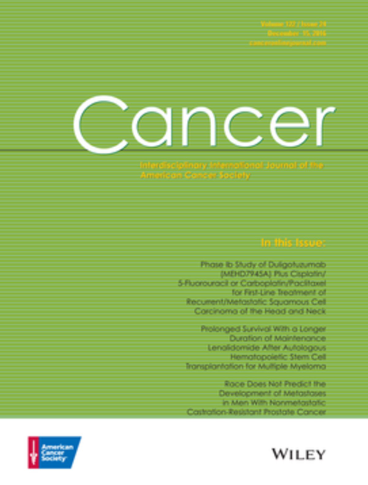Olaparib as treatment for platinum-sensitive relapsed ovarian cancer by BRCA mutation and homologous recombination deficiency: Phase 2 LIGHT study final overall survival analysis
Abstract
Background
LIGHT (oLaparib In HRD-Grouped Tumor types; NCT02983799) prospectively evaluated olaparib treatment in patients with platinum-sensitive relapsed ovarian cancer (PSROC) assigned to cohorts by known BRCA mutation (BRCAm) and homologous recombination deficiency (HRD) status: germline BRCAm (gBRCAm), somatic BRCAm (sBRCAm), HRD-positive non-BRCAm, and HRD-negative. At the primary analysis, olaparib treatment demonstrated activity across all cohorts, with greatest efficacy in terms of objective response rate and progression-free survival observed in the g/sBRCAm cohorts. The authors report final overall survival (OS).
Methods
In this phase 2, open-label, noncomparative study, patients with PSROC and one or more prior line of platinum-based chemotherapy were assigned to cohorts by BRCAm and HRD status. OS was a secondary end point. Tumors were analyzed using Myriad BRACAnalysis CDx and MyChoice CDx assays; HRD-positive tumors were defined using a genomic instability score of ≥42.
Results
Of 272 enrolled patients, 271 received olaparib and 270 met the inclusion criteria for the efficacy analysis. At data cutoff, 18-month OS rates in the gBRCAm, sBRCAm, HRD-positive non-BRCAm, and HRD-negative cohorts were 86.4%, 88.0%, 78.6%, and 59.6%, respectively. No new safety signals were observed. In a post hoc analysis, patients on treatment for >18 months were most frequently present in g/sBRCAm cohorts (31.0%).
Conclusions
Olaparib treatment continued to demonstrate benefit across all cohorts. Consistent with the primary analysis, the highest OS rates were observed in the BRCAm cohorts, regardless of g/sBRCAm. In patients without a BRCAm, a higher OS rate was observed in the HRD-positive non-BRCAm than the HRD-negative cohorts. These results highlight the importance of biomarker testing in this treatment setting.


 求助内容:
求助内容: 应助结果提醒方式:
应助结果提醒方式:


